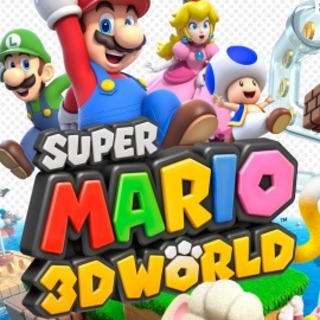Super Mario Galaxy was grand. It was a surprisingly effective step forward for the Mario 3D gameplay after the irregular Super Mario Sunshine. More importantly, it was a series that understood that even though placing the character in some wide and explorable environment was exciting, there was a whole lot to be gained by producing a 3D Mario game that took advantage of the qualities found on the franchise's sidescrolling past. Therefore, not only did its intergalactic setting give the adventure truly epic undertones, but it also allowed Nintendo's creativity to go wild in the production of stages that did not have to make sense either in their themes or shapes. It was an unlimited sandbox for level creation, and it delivered in spectacular ways.
Super Mario 3D World, as that series' successor in the main line of Mushroom Kingdom adventures, arrives carrying the heavy burden of following platforming perfection and trying to make a name for itself in a console that has yet to truly take off. Surprisingly, the game's strategy to climb that hill goes against expectations. Instead of trying to be bigger than the Galaxy games, Super Mario 3D World shrinks its scope. It does away with hyper-scaled worlds and gravity mechanics, and replaces them with cozy simplicity. While its spiritual predecessor - the 3DS' Super Mario 3D Land - attempted to be the pure translation of a sidecrolling Mario game to three dimensions and failed because of unremarkable stage design, Super Mario 3D World achieves that goal fantastically well. And while it does not have the same impact as the Galaxy games did, it cannot be accused of being less fun.
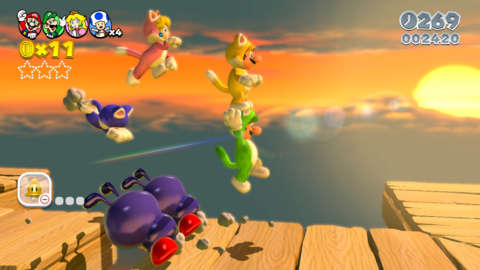
On the heels of Galaxy's thrilling planetoid-hopping freedom, the game's controls and camera are likely to feel strange at first. The characters do not run with great momentum, and picking up speed takes a little while. As a consequence, jumps are much tighter and the precision seems off at first. Still, with time, the different physics and restricted camera begin to make sense within the context of the game's stages. They are more focused than ever, and despite the fact that their length varies between satisfyingly short and decently lengthy, all of them are equally packed with one smart platforming segment after the other. Therefore, rushing at great speeds and performing impossibly momentous jumps becomes unnecessary given the lack of open spaces and time to breathe quietly away from a tense segment.
Mario, Luigi, Toad and Peach are all controllable, and their behavior is directly extracted from the NES' Super Mario Bros 2. Mario is the most balanced of all characters, while Luigi runs fast, performs very high jumps but has slippery steps, making it hard to stop his motion precisely. Toad is the fastest of the bunch and his small quick jumps can be a saving grace at times and a major hindrance on certain occasions. Finally, Peach is distinctively slower than the others, but her ability to hover in mid-air for a couple of seconds can be of great value when dealing with stages with tiny platforms and tricky jumps, not to mention how helpful she can be for more inexperienced players. The character variety adds a lot to the game's replay value, and - to those who constantly switch between all of the four - it adds a little extra flavor to each new stage.
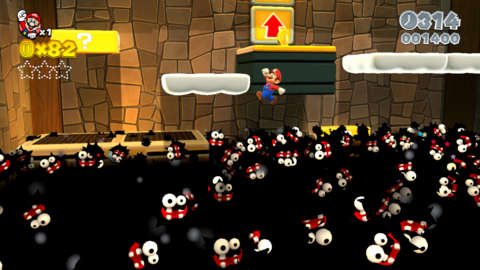
The greatest gift the Galaxy series, especially Galaxy 2, gave to Super Mario 3D World is undoubtedly the fact that it showed how much there was to be gained when not trying to feature any sort of thematic cohesion within each of the game's worlds. Although the game offers eight overworlds that center around familiar themes for the franchise - such as water, desert, etc - the stages within each do not follow along the theme. Hence, a forest stage can be found in a water world, and an ice level can be put in a castle world. Not only does it keep the experience from growing visually stale from spending hours on stages with the same scenario, but it also unleashes stage designers to create whatever they please and place the stage in a position where it makes sense from a difficulty standpoint.
What that freedom of design mostly supports is the unbelievable ability stages have to keep surprising players throughout the game. Super Mario 3D World, supposedly restricted to its apparent simplicity, has an enormous amount of tricks on its sleeve, and it uses them wisely and constantly. Aside from a few level remixes on the extra worlds after the main game is completed, no stages are even remotely alike. Their platforming challenges are ridiculously diverse, and the game - without any feel of repetition - occasionally pays homage to elements that have been used in previous Mario games. The new power-ups - the cat suit, which allows characters to climb walls, and the double cherry, which creates an extra copy of the character - are used to great effect to crate new challenges and platforming situations.
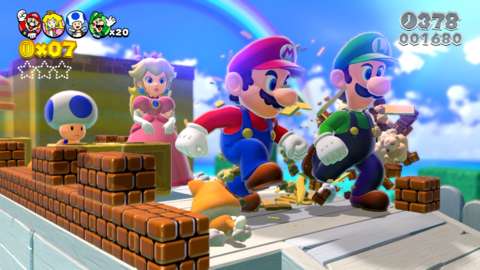
Aside from the traditional reach-the-pole stages, Nintendo has thrown a few unique levels along the way. Battle levels, on which players will either face big bosses or numerous smaller enemies, are fairly frequent. However, the bosses, whether they are brand new ones or extracted straight from other Mario games, are uninspired; and battling hordes of enemies without any platforming elements was never something Mario games have thrived at. The other two kinds of stages, which are unfortunately rarer than the battles, are absolutely brilliant.
Mystery Houses feature a series of five greatly varied ten-second challenges - which can be puzzles, platforming segments, and enemy hordes - that must be cleared quickly and in order. Meanwhile, The Adventures of Captain Toad offer cubic dungeon-like stages through which players must navigate by carefully guiding the unable-to-jump captain while moving the camera around the level to discover new paths and secrets through new perspectives. Those levels add a lot to the game's already impressive range of tricks, and they are so purely fun that Nintendo could easily package a bunch of them as fantastic inexpensive DLC games.
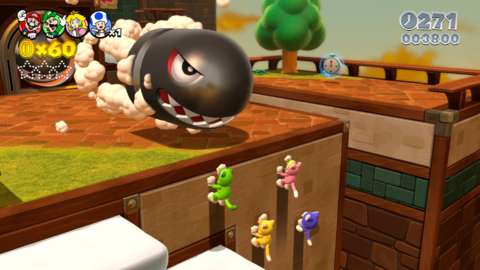
Super Mario 3D World follows the norm of recent Mario titles and starts out pretty slowly, with the first couple of worlds barely providing any noteworthy challenge. However, before the final world is reached, the game's difficulty will have picked up significantly, providing great challenge even to those who are experienced in the art of jumping. Featuring over sixty stages until the conclusion of the main game is reached, Super Mario 3D World holds about thirty or so extra levels that start out very hard and, by the time players manage to get to the very last world, will have risen to brutally tough heights. Therefore, it is a game that offers a pretty good challenge to those who simply want to get to its regular end, while also presenting a brutal platforming test to those who are willing to go beyond the final Bowser battle.
And that is not all, as each level features three green stars and one stamp that are often cleverly hidden. The stars are used in the main game to open the gates to the castle stages, so collecting some of them is certainly mandatory. The stamps are great little collectibles that allow players to add numerous Mario-related drawings to their Miiverse posts, giving them the power to either brag about a tough-to-acquire stamp they have collected or simply create humorous drawings about the Mario universe. If New Super Mario Bros U took advantage of the Miiverse to great extents, Super Mario 3D World goes beyond it, as not only does it feature user posts fully integrated to the world map and stages, but it also gives players the opportunity to play against other users' ghosts, making time trials nicely interesting and giving inexperienced players some help in finding the game's hidden secrets.
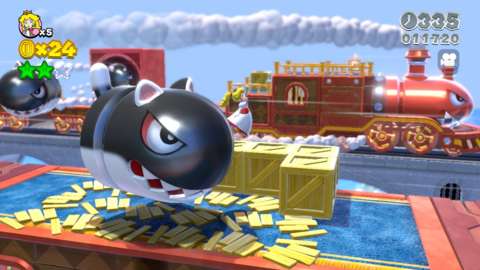
Super Mario 3D World ends up finding ways to stun even those who are still numb from the sheer greatness that was the Super Mario Galaxy series. It is a game of unparalleled visual goodness, and as of the day of its release, it is - by far - as close as the gaming industry has been to visually replicating the colorfulness of the Pixar world. But, more importantly than that, it is a game that will please gamers from all ages, backgrounds and tastes. It has a seemingly endless amount of brilliant levels, unique characters, a multiplayer mode that transits between madly competitive and pleasantly cooperative, and a great online integration. Nintendo really could not have done it any better.
